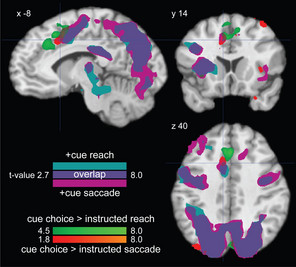Effector specificity in visual perceptual learning: neural basis and a new training paradigm

Whenever we learn, we face a dilemma: specialize or generalize. Specialization is efficient in stable environments: a piano keyboard will never change, hence, one learns its specifics. Generalization is beneficial in volatile environments, e.g., when one switches from piano to organ. Our visual system is able to adapt to environmental demands through learning. However, its ability to generalize is thought to be limited. Here, we study whether learning to discriminate visual stimuli is specific for associations between stimuli and effectors, e.g., hand movements to indicate which stimulus was seen. This association is likely formed in a brain region that integrates sensory inputs with motor plans. We developed a methodology to allow subjects to make choices using eye or hand movements, inside and outside the MRI scanner. We find that associations between stimuli and motor outputs are not specific to effectors: learning with hand movements fully transfers to eye movements. Hence, effector-specificity is not one of the defining characteristics of visual learning. Indeed, the fMRI study that uses devices we developed showed that there is a significant overlap between brain regions involved in eye movement and hand movement decisions.

